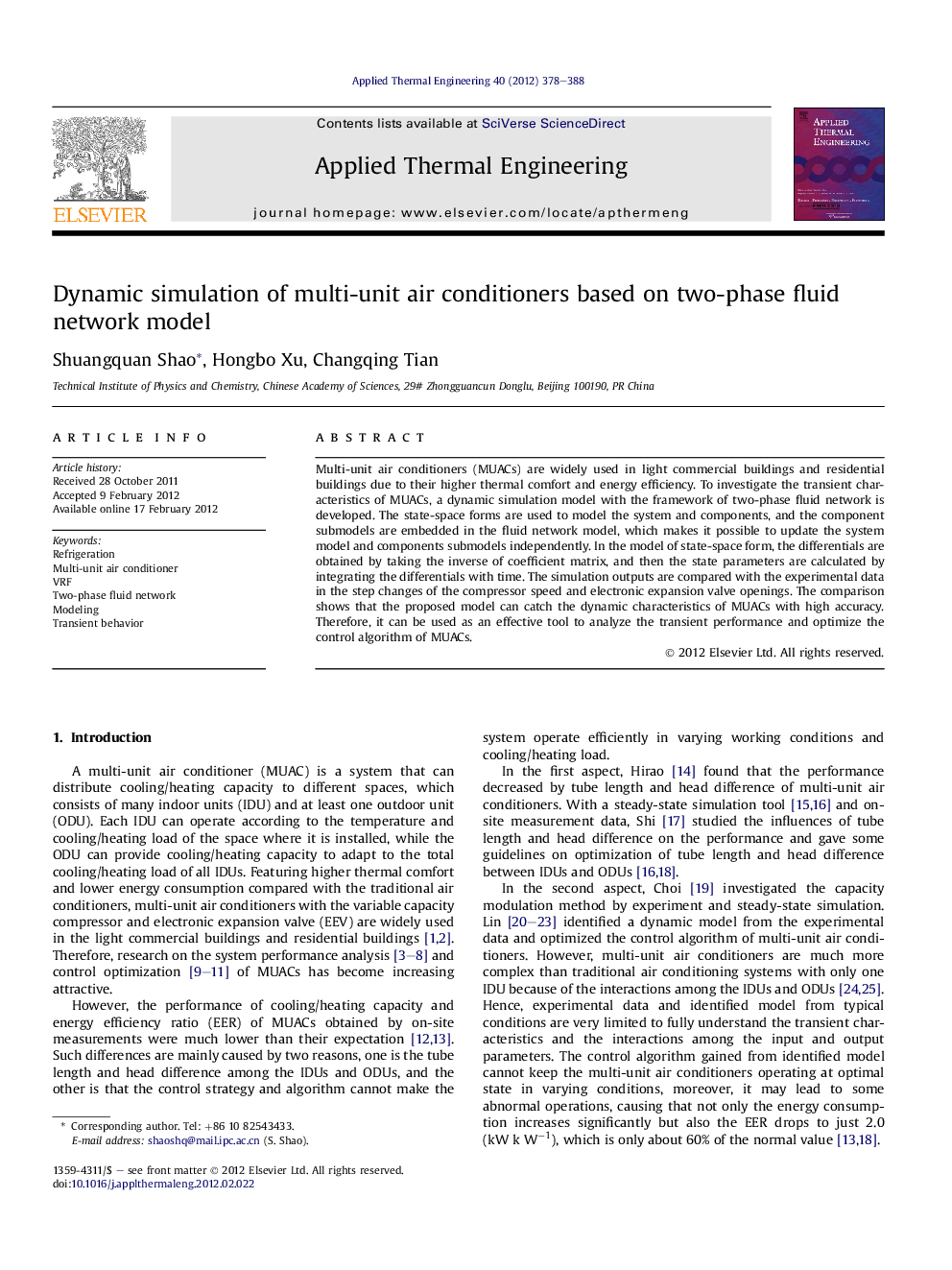| Article ID | Journal | Published Year | Pages | File Type |
|---|---|---|---|---|
| 647351 | Applied Thermal Engineering | 2012 | 11 Pages |
Multi-unit air conditioners (MUACs) are widely used in light commercial buildings and residential buildings due to their higher thermal comfort and energy efficiency. To investigate the transient characteristics of MUACs, a dynamic simulation model with the framework of two-phase fluid network is developed. The state-space forms are used to model the system and components, and the component submodels are embedded in the fluid network model, which makes it possible to update the system model and components submodels independently. In the model of state-space form, the differentials are obtained by taking the inverse of coefficient matrix, and then the state parameters are calculated by integrating the differentials with time. The simulation outputs are compared with the experimental data in the step changes of the compressor speed and electronic expansion valve openings. The comparison shows that the proposed model can catch the dynamic characteristics of MUACs with high accuracy. Therefore, it can be used as an effective tool to analyze the transient performance and optimize the control algorithm of MUACs.
► A dynamic model is developed for multi-unit air conditioners (MUAC). ► The model is built in the two-phase fluid network for different MUACs. ► State-space method model is built for evaporators, condensers and MUACs. ► The component submodels are embedded in the fluid network model for easy updating. ► The model can catch the dynamic characteristics of MUACs with high accuracy.
